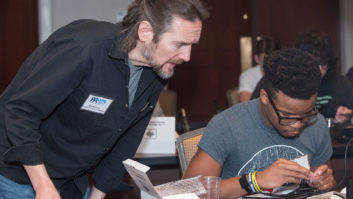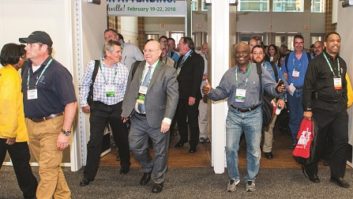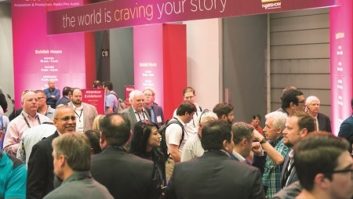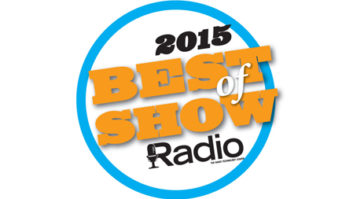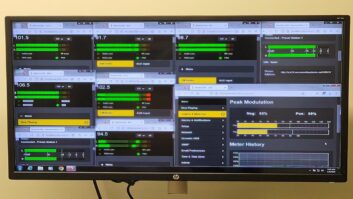HD Radio, Networked Audio, Content Depot Are Among Hot Topics for Vendors at NAB
Vendors who’ll soon be setting up booths at the Las Vegas Convention Center say the halls of NAB2006 will be filled with buzzwords that would have been a mystery to convention attendees even a decade ago: “USB,” “Content Depot,” “5.1 Surround” and so on.
At the center of the buzz is HD Radio. As recently as a year ago, the technology seemed for to some major radio groups to be a “what if” proposition. This year, with the help of the HD Alliance and the commitment of many groups to roll out and promote digital signals, it feels more substantial.
For instance, on the transmission side of the business, Continental Electronics’ Dave Hultsman said at WQED(FM), Pittsburgh, the company recently installed its first D-816HD combined analog-HD Radio transmitter, a product introduced at last year’s spring convention.
ERI President and CEO Tom Silliman said the HD-R conversion is one reason his company is getting to work on major FM master antenna replacement projects in San Antonio, Minneapolis/St. Paul and Orlando. “All of a sudden, the need to have HD is pushing people into replacing these antiquated systems,” Silliman said.
It’s another aspect of HD Radio – the multicast programming on FM – that has many vendors buzzing this year, though.
Choices
“At NAB, I would expect one of the big highlights would be HD Radio multicasting,” Hultsman said, and other vendors interviewed by Radio World agree.
HD2 channels are on the minds of clients, according to Diana Stokey, manager of marketing for Prophet Systems. Broadcasters are opening their wallets, she believes, to add automation systems to run multicast channels, which have become a central marketing point for HD Radio.
“I think (HD2) opens up potential for more programming, and for bringing more choices to their audiences.”
The prospect for further multicasting, especially among public broadcasters already experimenting with a third multicast stream on FM, has Neural Audio President Mark Seigle excited about this NAB. “There’s an interesting content vacuum,” he said.
As broadcasters work on filling that vacuum with new multicast programming, Seigle said stations that rushed to get HD Radio on the air are now looking at tweaking processing to get the most out of the system’s digital bitstream. In some cases, such as Neural’s alliance with Continental, manufacturers are working across category lines to offer broadcasters turnkey HD-R solutions.
“At this NAB, the processing world is going to be important to all the manufacturers,” Seigle said. “There’s an importance to getting HD1 and HD2 channels sounding great.”
Manageable
Some manufacturers are looking ahead to NAB2010 and beyond as they prepare for further expansions in multicasting, he said. “We’ve gotten some feedback that adding HD3 and HD4 channels is compelling, especially for the National Public Radio folks,” he said.
“Processing companies need to think five years out,” Seigle said. That includes the addition of surround sound to HD Radio, which Neural and other processing companies will again demonstrate at NAB 2006.
While NAB itself is an association of commercial broadcasters, public broadcasters shop at the convention too. Don Backus, vice president of sales and marketing for ENCO Systems, said that for pubcasters, this NAB is “the year of Content Depot,” the distribution system that’s being rolled out by the Public Radio Satellite System to combine live program delivery with on-demand content transmission to stations.
ENCO is providing automation systems to public broadcasters that were not equipped with any automation to handle Content Depot feeds, which are now expected to go live this summer, as reported by Radio World.
“I think other new developments are mostly incremental, not revolutionary, as manufacturers tweak and adjust products to meet expressed client needs,” Backus said.
For many vendors, that “tweaking” includes an emphasis on convergence. ENCO, for instance, intends to show its Streamline system, which links the ENCO DAD automation system with Wicks’ Visual Traffic software and with Powergold music scheduling.
At Burk Technology, “The big challenge our customers face is how to expand their broadcasting activities while keeping engineering infrastructure at a manageable level,” said Nathan Burk. For many broadcasters, that’s being accomplished by standardizing certain core equipment purchases across entire groups.
Networked audio
“What standardization means for the supplier is that versatility is more important than ever. The same piece of gear needs to work in a much wider range of applications,” he said.
In many cases, all that gear is being connected through interfaces that are more familiar to computer professionals than to broadcast engineers.
“Users like the ease and reliability of USB interface, so it is likely to be a growing trend,” said Hank Landsberg of Henry Engineering, which plans to roll out several pieces of USB-equipped gear at the show.
On a larger scale, audio distribution over IP networks rapidly is replacing traditional wiring in studio plants, and that’s keeping vendors of studio equipment busy. “There are still a large number of studio and automation related upgrades and building going on,” Backus of ENCO said.
“What engineer doesn’t welcome the chance to upgrade their plant and have it be corporate’s idea?” asked Telos/Omnia/Axia spokesman Clark Novak.
“Along with RF upgrades, the purse strings are loosened a bit more to do complementary studio upgrades too,” Novak said. “It should be a big year for refurb buildouts.”
Overall, vendors sampled by Radio World said the industry seems confident going into NAB2006, with much of the uncertainty around HD Radio – and the fear of satellite radio dominance – giving way to more concrete planning for the future.
“All of these things combine to reassure broadcasters that the industry is healthy,” Burk said. “We see evidence of this when buyers take advantage of a new HD transmitter project to also add to their transmitter remote control system or get their system talking over IP. There’s an eagerness to move forward with plans, which is great to see.”
Novak points to recent sales of broadcast suppliers – dMarc, RCS and Broadcast Electronics – as a sign that broadcasting is becoming more closely tied to the world of information technology.
“Anyone who’s been paying attention knows that audio engineers have been de facto IT experts for about a decade now. With big players outside broadcast taking a pointed interest in the digital side of radio, computer-based applications, networks and solutions are going to become an even larger part of daily life in the tech shop. Show me a guy who refuses to give up his analog plant, and I’ll show you the bandleader on the Titanic,” he said.
While Novak believes there’s still a note of caution about the economy – nobody’s “gung-ho” just yet, he said – he calls himself “cautiously optimistic” about a strong show in Las Vegas.
For ERI, at least, there’s a concrete sign of confidence heading into NAB this year: Silliman said the company’s expanding its floor presence, going from a 30-by-30-foot booth to a 40-by-40 foot space.
“We look forward to a good show,” he said.
Suppliers and attendees: What do you think is ahead for the industry? Tell our readers. Comment via e-mail to [email protected].





